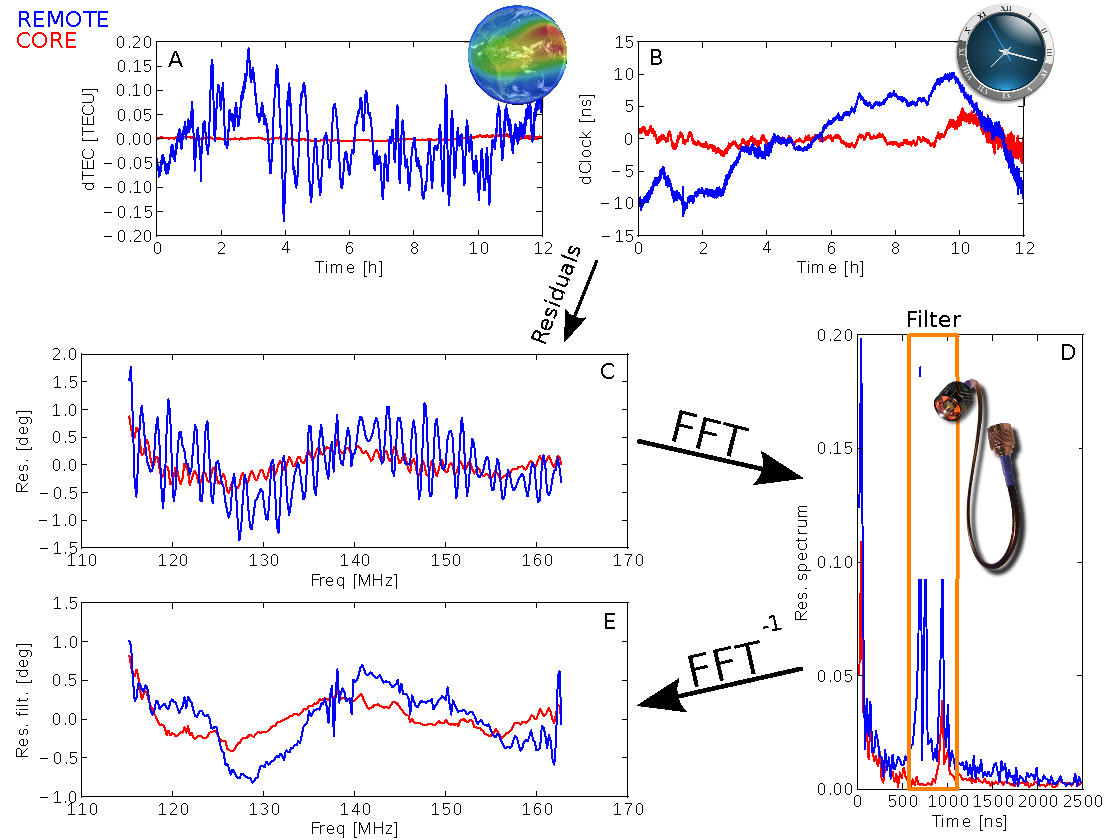Daily Image
12-02-2013LOFAR phase systematic effects
| Submitter: | Francesco de Gasperin |
| Description: | In this image we summarized the process that helped some LOFAR commissioners to disentangle the different systematic errors which affect the telescope phases. The final effect of each of these systematic errors can be thought as a delay in recording the signal for one or more stations. The first step is to separate the delays caused by ionospheric fluctuations (A) from those caused by the atomic clocks drifts (B). This process takes advantage from the different frequency dependence that these two effects have on the recorded fringe phases. The time-averaged residual phases (C) shows clear ripples in both core and remote stations, a quick inspection in the Fourier space (D) reveals two peak for the remote and one peak for the core stations. These peaks corresponds to delays of 700 and 926 ns, which are related to reflections in the coaxial cables of the LOFAR stations (remotes have cables with two lengths, therefore two peaks). Assuming the speed of the signal in the coaxial cables to be 0.8c we obtain cable lengths of 111 and 83 m (true values are 115 and 85m). Once these effect is filtered out with a simple box-filter, we have the (time-averaged) residual phase bandpass of LOFAR-HBA (E), which is less than 2 degrees across the whole band. Francesco de Gasperin, Maaijke Mevius, Bas van der Tol, Reinout van Weeren, Annalisa Bonafede |
| Copyright: | Francesco de Gasperin and the LOFAR collaboration |
| Tweet |  |
